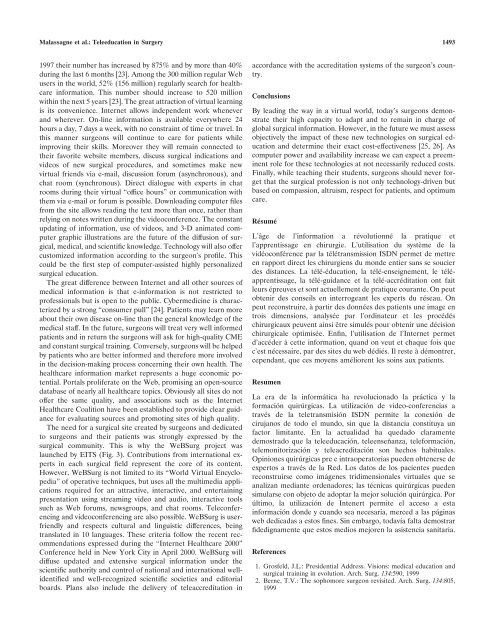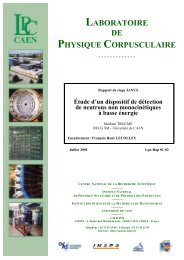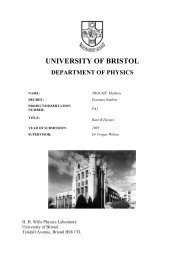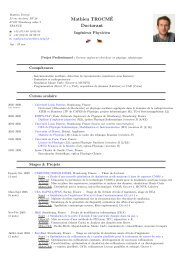European Institute for TeleSurgery Experience - Free
European Institute for TeleSurgery Experience - Free
European Institute for TeleSurgery Experience - Free
You also want an ePaper? Increase the reach of your titles
YUMPU automatically turns print PDFs into web optimized ePapers that Google loves.
Malassagne et al.: Teleeducation in Surgery 1493<br />
1997 their number has increased by 875% and by more than 40%<br />
during the last 6 months [23]. Among the 300 million regular Web<br />
users in the world, 52% (156 million) regularly search <strong>for</strong> healthcare<br />
in<strong>for</strong>mation. This number should increase to 520 million<br />
within the next 5 years [23]. The great attraction of virtual learning<br />
is its convenience. Internet allows independent work whenever<br />
and wherever. On-line in<strong>for</strong>mation is available everywhere 24<br />
hours a day, 7 days a week, with no constraint of time or travel. In<br />
this manner surgeons will continue to care <strong>for</strong> patients while<br />
improving their skills. Moreover they will remain connected to<br />
their favorite website members, discuss surgical indications and<br />
videos of new surgical procedures, and sometimes make new<br />
virtual friends via e-mail, discussion <strong>for</strong>um (asynchronous), and<br />
chat room (synchronous). Direct dialogue with experts in chat<br />
rooms during their virtual “office hours” or communication with<br />
them via e-mail or <strong>for</strong>um is possible. Downloading computer files<br />
from the site allows reading the text more than once, rather than<br />
relying on notes written during the videoconference. The constant<br />
updating of in<strong>for</strong>mation, use of videos, and 3-D animated computer<br />
graphic illustrations are the future of the diffusion of surgical,<br />
medical, and scientific knowledge. Technology will also offer<br />
customized in<strong>for</strong>mation according to the surgeon’s profile. This<br />
could be the first step of computer-assisted highly personalized<br />
surgical education.<br />
The great difference between Internet and all other sources of<br />
medical in<strong>for</strong>mation is that e-in<strong>for</strong>mation is not restricted to<br />
professionals but is open to the public. Cybermedicine is characterized<br />
by a strong “consumer pull” [24]. Patients may learn more<br />
about their own disease on-line than the general knowledge of the<br />
medical staff. In the future, surgeons will treat very well in<strong>for</strong>med<br />
patients and in return the surgeons will ask <strong>for</strong> high-quality CME<br />
and constant surgical training. Conversely, surgeons will be helped<br />
by patients who are better in<strong>for</strong>med and there<strong>for</strong>e more involved<br />
in the decision-making process concerning their own health. The<br />
healthcare in<strong>for</strong>mation market represents a huge economic potential.<br />
Portals proliferate on the Web, promising an open-source<br />
database of nearly all healthcare topics. Obviously all sites do not<br />
offer the same quality, and associations such as the Internet<br />
Healthcare Coalition have been established to provide clear guidance<br />
<strong>for</strong> evaluating sources and promoting sites of high quality.<br />
The need <strong>for</strong> a surgical site created by surgeons and dedicated<br />
to surgeons and their patients was strongly expressed by the<br />
surgical community. This is why the WeBSurg project was<br />
launched by EITS (Fig. 3). Contributions from international experts<br />
in each surgical field represent the core of its content.<br />
However, WeBSurg is not limited to its “World Virtual Encyclopedia”<br />
of operative techniques, but uses all the multimedia applications<br />
required <strong>for</strong> an attractive, interactive, and entertaining<br />
presentation using streaming video and audio, interactive tools<br />
such as Web <strong>for</strong>ums, newsgroups, and chat rooms. Teleconferencing<br />
and videoconferencing are also possible. WeBSurg is userfriendly<br />
and respects cultural and linguistic differences, being<br />
translated in 10 languages. These criteria follow the recent recommendations<br />
expressed during the “Internet Healthcare 2000”<br />
Conference held in New York City in April 2000. WeBSurg will<br />
diffuse updated and extensive surgical in<strong>for</strong>mation under the<br />
scientific authority and control of national and international wellidentified<br />
and well-recognized scientific societies and editorial<br />
boards. Plans also include the delivery of teleaccreditation in<br />
accordance with the accreditation systems of the surgeon’s country.<br />
Conclusions<br />
By leading the way in a virtual world, today’s surgeons demonstrate<br />
their high capacity to adapt and to remain in charge of<br />
global surgical in<strong>for</strong>mation. However, in the future we must assess<br />
objectively the impact of these new technologies on surgical education<br />
and determine their exact cost-effectiveness [25, 26]. As<br />
computer power and availability increase we can expect a preeminent<br />
role <strong>for</strong> these technologies at not necessarily reduced costs.<br />
Finally, while teaching their students, surgeons should never <strong>for</strong>get<br />
that the surgical profession is not only technology-driven but<br />
based on compassion, altruism, respect <strong>for</strong> patients, and optimum<br />
care.<br />
Résumé<br />
L’âge de l’in<strong>for</strong>mation a révolutionné la pratique et<br />
l’apprentissage en chirurgie. L’utilisation du système de la<br />
vidéoconférence par la télétransmission ISDN permet de mettre<br />
en rapport direct les chirurgiens du monde entier sans se soucier<br />
des distances. La télé-éducation, la télé-enseignement, le téléapprentissage,<br />
la télé-guidance et la télé-accréditation ont fait<br />
leurs épreuves et sont actuellement de pratique courante. On peut<br />
obtenir des conseils en interrogeant les experts du réseau. On<br />
peut reconstruire, à partir des données des patients une image en<br />
trois dimensions, analysée par l’ordinateur et les procédés<br />
chirurgicaux peuvent ainsi être simulés pour obtenir une décision<br />
chirurgicale optimisée. Enfin, l’utilisation de l’Internet permet<br />
d’accéder à cette in<strong>for</strong>mation, quand on veut et chaque fois que<br />
c’est nécessaire, par des sites du web dédiés. Il reste à démontrer,<br />
cependant, que ces moyens améliorent les soins aux patients.<br />
Resumen<br />
La era de la in<strong>for</strong>mática ha revolucionado la práctica y la<br />
<strong>for</strong>mación quirúrgicas. La utilización de video-conferencias a<br />
través de la teletransmisión ISDN permite la conexión de<br />
cirujanos de todo el mundo, sin que la distancia constituya un<br />
factor limitante. En la actualidad ha quedado claramente<br />
demostrado que la teleeducación, teleenseñanza, tele<strong>for</strong>mación,<br />
telemonitorización y teleacreditación son hechos habituales.<br />
Opiniones quirúrgicas pre e intraoperatorias pueden obtenerse de<br />
expertos a través de la Red. Los datos de los pacientes pueden<br />
reconstruirse como imágenes tridimensionales virtuales que se<br />
analizan mediante ordenadores; las técnicas quirúrgicas pueden<br />
simularse con objeto de adoptar la mejor solución quirúrgica. Por<br />
último, la utilización de Intenert permite el acceso a esta<br />
in<strong>for</strong>mación donde y cuando sea necesaria, merced a las páginas<br />
web dedicadas a estos fines. Sin embargo, todavía falta demostrar<br />
fidedignamente que estos medios mejoren la asistencia sanitaria.<br />
References<br />
1. Grosfeld, J.L.: Presidential Address. Visions: medical education and<br />
surgical training in evolution. Arch. Surg. 134:590, 1999<br />
2. Berne, T.V.: The sophomore surgeon revisited. Arch. Surg. 134:805,<br />
1999






